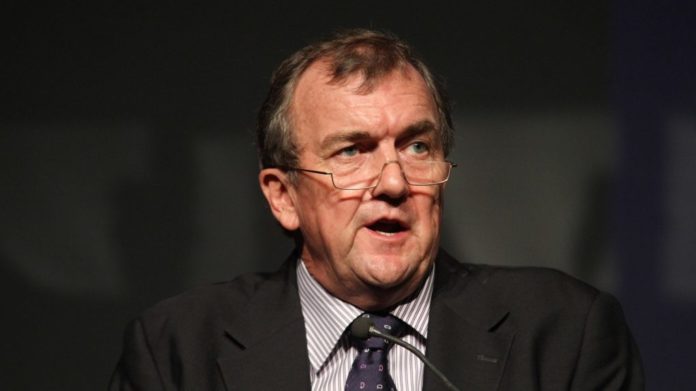
MARK Bristow said his company Barrick Gold had “a way to go” before it could convince investors its improved financial performance was sustainable.
“Our share price is above its five year profile on metrics but it’s lagging Newmont (Mining),” he said in an interview. Shares in Barrick Gold are nearly 21% higher this year, but largely flat over the last 12 months compared to Newmont’s 13% gain.
“We have outperformed the GDX (Van Eck Gold Miners ETF) which is a good measure but we have got a funny money syndrome in the US,” he said. Traditional businesses were performing well but weren’t attracting the valuations, he said.
This was partly to do with broad macro-economic factors including the way Covid-19 was managed globally, the failure of the US Federal Reserve to tackle inflation sufficiently well, and the under-performance of global GDP.
Barrick today announced it would pay a 20 US cents per share first quarter dividend, reflecting the first contribution from a new shareholder return plan unveiled in February.
In terms of the plan, shareholders will receive an additional five cents per quarter dividend if net cash of up to $500m is on the balance sheet and 10 cents if cash of $500m to $1bn is declared. As of end-March, Barrick held cash of $743m.
Contributing to the quarter-end cash was a $600m share in profits from Barrick’s Kibali mine in the Democratic Republic of Congo, a lucrative gold mine held in joint venture with AngloGold Ashanti. The profits were held up in the country for years. Cash was also boosted by asset sales.
Barrick posted adjusted net earnings for the March quarter – the first of its financial year – of $463m which compares to $626m in the previous quarter.
The reduction was owing to a 17.7% decline in first quarter production largely at the firm’s Carlin and Cortez mines in Nevada where higher grade stockpiled ore had been depleted. The two mines are held in the Nevada Gold Mines joint venture with Newmont Mining.
The average market price for gold in the quarter was $1,877 per ounce, up from $1,795/oz in the prior quarter. All-in sustaining costs (AISC) for gold came in at $1,164/oz compared to $971/oz in the previous quarter.
Aggressive greenfields expansion
Commenting on the firm’s strategy announced earlier this year to pursue aggressive greenfields exploration spanning the globe from Japan and China to northern Africa and less known prospective regions in South America, Bristow said it was important to discover gold “before the juniors”.
“The growth concept (in the mining industry) has been led by the junior market (small exploration companies), but their focus has been too small to generate opportunities. It’s no good getting there after the juniors,” he said.
Barrick produced 4.4 million oz in gold in its 2021 financial year and has proven and probable reserves totalling 68 million oz assuming a $1,200/oz gold price. It has targeted the development of tier one mines of no less than 300,000 oz in production annually in order to make a meaningful impact on its overall production.
Bristow also said the exploration push was related to the firm’s view there was no value in the mergers & acquisitions currently. The 11 transactions in the gold sector in the last quarter involved companies that had “missed out” in the consolidation of 2019. “That was at a time when the gold price was low. Now there’s nothing in the market.”
In addition to the exploration strategy, Barrick announced in March it planned to reopen the Reko Diq copper/gold project with the government of Pakistan after years of wrangling between the two sides. “When I arrived the two were ripping each others’ throats out. We now have had very constructive discussions,” said Bristow.
Once a framework agreement with the Pakistani partners has been closed, Barrick will set about updating the project’s 2010 feasibility and 2011 expansion prefeasibility studies. The reconstituted project will be held 50% by Barrick and 50% by Pakistan’s stakeholders.
The financing structure of Reko Diq, including equity held by government and local state-owned enterprises, provides assurance to Barrick, said BMO Capital Markets. First metal could be produced in 2027/2028, but analysts said it was high risk. “We don’t take risks, we manage them,” said Bristow.
Barrick said its gold production in 2022 is expected to increase through the year, while copper production is expected to be higher in the second half.
The company’s copper production during the quarter was 101 million pounds, down 19.84% from the previous quarter, hurt by lower output at its Lumwana mine, while total preliminary gold production was down 17.7% at 990 million ounces.











